Why is Art Important for Child Development
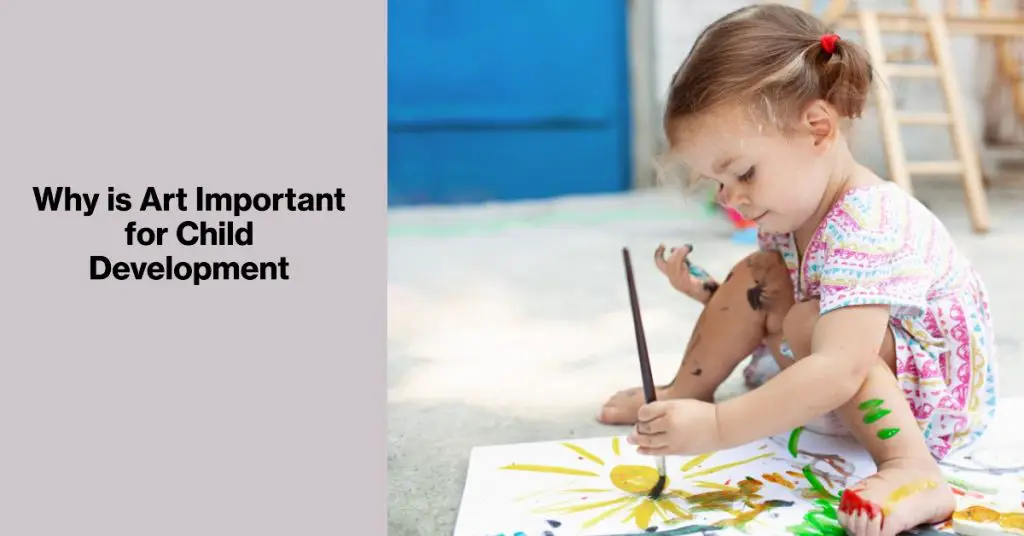
Art is essential to a child’s development, yet it is often overlooked in favor of other academic subjects.
Research has shown that the benefits of art for children extend far beyond simply creating pretty pictures.
Art can help develop critical thinking, problem-solving skills, and emotional intelligence while fostering creativity and self-expression.
This article will explore five reasons why art is important for child development.
From enhancing cognitive abilities to promoting social skills and boosting self-esteem, we will explore how art can positively impact a child’s growth and development.
So if you’re wondering why art matters in your child’s life, read on to discover its many benefits!
Table of Contents
The Importance of Child Development
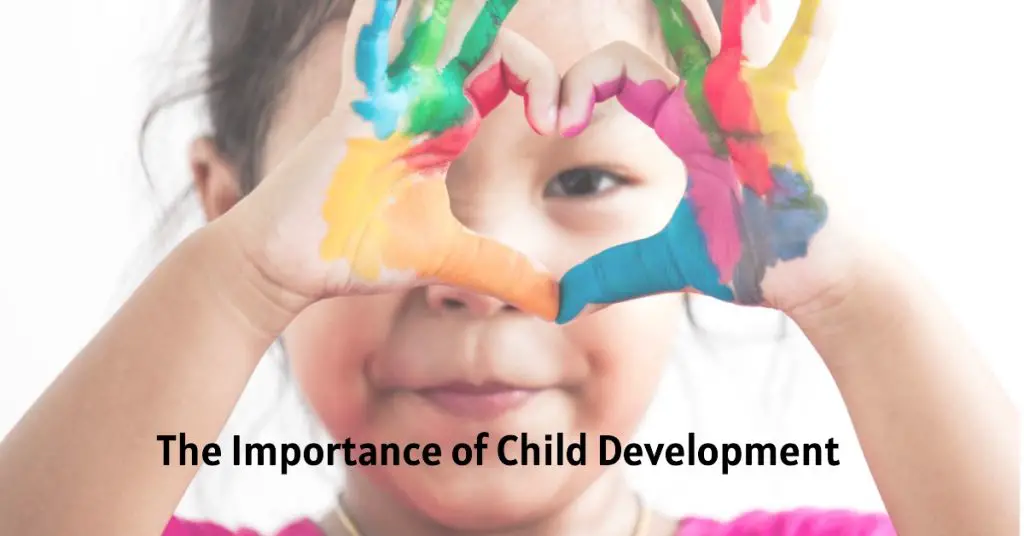
Child development refers to the physical, cognitive, emotional, and social changes in children from birth to adulthood.
It is a dynamic process influenced by various factors such as genetics, environment, experiences, and relationships.
Art is crucial in child development as it promotes creativity and imagination, essential for intellectual growth.
Moreover, it develops cognitive skills like problem-solving that help children handle challenges better.
Additionally, art promotes emotional intelligence by allowing children to express themselves freely without judgment or criticism; helping them manage difficult emotions like anger or sadness while fostering compassion towards others.
Art can be seen as an essential component in the holistic development of any child`s life.
It helps boost creative thinking skills, which are fundamental for future success, while simultaneously promoting emotional intelligence, which plays a big part in how we interact with others later on down the line.
Parents should encourage their kids to take part in artistic activities not just for fun but also because it will help foster lifelong learning habits that will stay with them forever.`
1. Creativity and Imagination
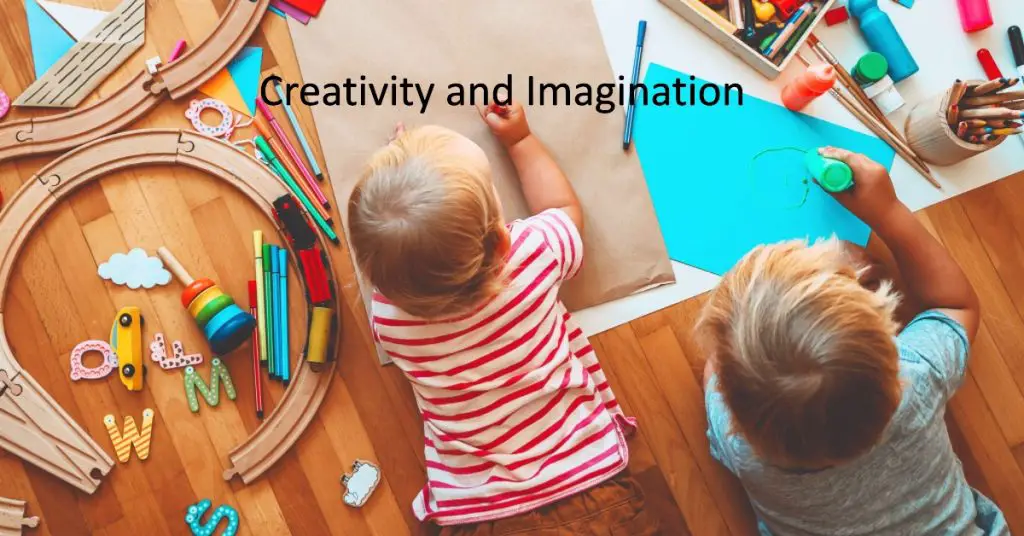
Art encourages creativity and imagination
Art is not just about creating a pretty picture. It’s about the process of creation.
The act of making something out of nothing is what makes art so special. Art encourages children to develop their creativity and imagination, vital skills they will use throughout their lives.
Through art, children learn to think outside the box and come up with solutions to problems that may not have an easy answer.
Art allows children to experiment with different shapes, colors, and textures.
Exploring these elements allows them to channel their imagination into creating something unique and personal.
The creation process leads to pride in oneself, which helps build confidence and self-esteem.
Children learn to express themselves through art
Art is a powerful tool for self-expression. Children struggling to express themselves through words can use art to outlet their emotions.
Art allows them to communicate their feelings without fear of being judged or misunderstood. Children can explore their innermost thoughts and feelings through art in a safe environment.
They can create something that reflects their identity without conforming to someone else’s expectations or standards.
Furthermore, by sharing their art with others, children learn how to communicate effectively and constructively receive feedback on their work.
This helps them develop the skills for healthy social interactions later in life.
Art is an incredibly valuable tool for encouraging creativity and imagination in children while providing them with an outlet for self-expression.
Kids develop critical thinking skills through exposure to different forms of artistic expression at a young age.
This will benefit them throughout their lives while also learning how to express themselves freely without being judged or criticized by others, ultimately leading to healthy emotional development.
2. Cognitive Development
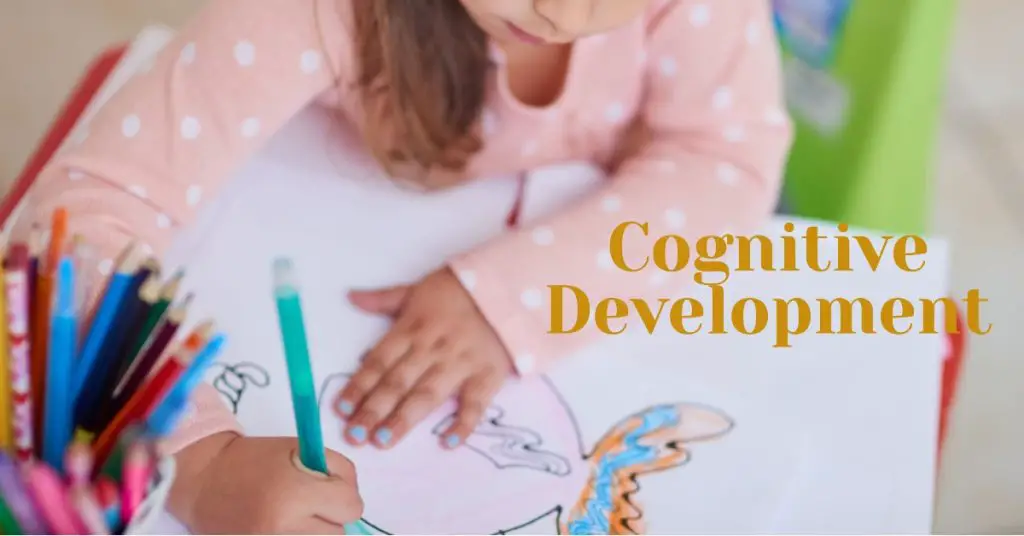
Art helps develop cognitive skills such as problem-solving, critical thinking, and decision-making
It’s no secret that children are naturally curious and love to explore the world around them.
Art provides an avenue through which they can develop their cognitive skills, such as problem-solving, critical thinking, and decision-making.
When a child is engaged in creating art, they must make decisions about color choices, composition, and tools.
They must also think critically about bringing their ideas to life within the constraints of the medium they are working with.
These activities help build neural pathways that will serve them well in all aspects of their lives. Moreover, when a child creates art, they are often faced with problems that require a solution.
For example, if they are making a sculpture out of play dough and it falls apart in their hands, they must figure out how to fix it or start over with new materials.
This type of problem-solving is invaluable for children as it helps them build resilience and adaptability.
Children learn to observe and analyze the world around them through art
Another way that art helps develop cognitive skills in children is by promoting active observation and analysis of the world around them.
When a child creates art from observation or imagination, they must pay close attention to details such as shape, proportionality shading, or color blending from hue differentiation techniques.
They may notice nuances in light direction within an observed object or subtle contrasts between colors in an abstract piece.
This attention to detail trains children’s minds to be more observant, boosting analytical abilities through artistic practices; this ability can be carried over into other areas, such as science or math, where details matter significantly when performing experiments or solving equations.
Art also allows children to experiment freely, leading them towards better utilization of creativity later in life – whether inventing new products, creating new ways of doing things, or even designing new technologies or software.
Cognitive development is a critical aspect of child development, and art is an excellent tool to achieve this.
It allows children to develop problem-solving, critical thinking, and decision-making skills while promoting active observation and analysis of their world.
3. Emotional Development
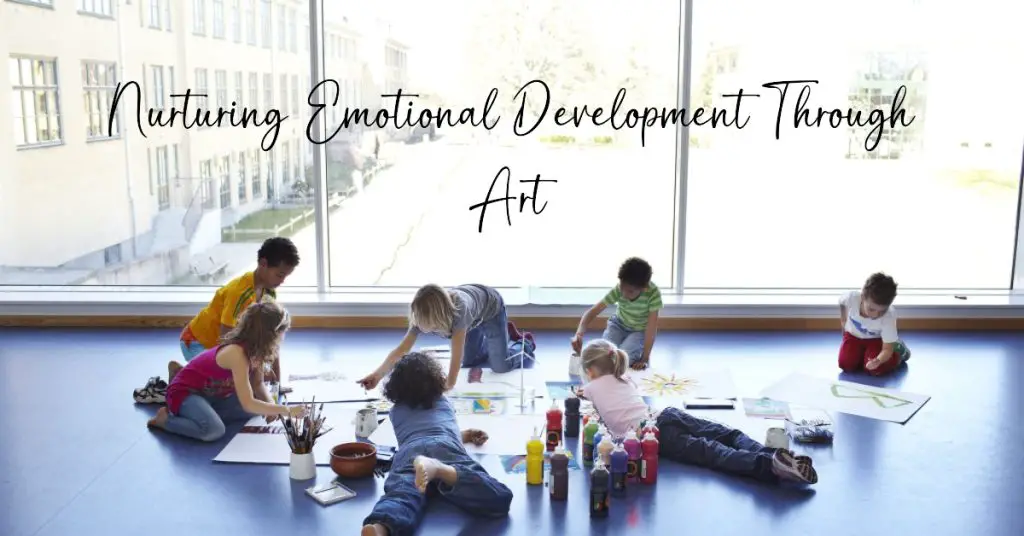
Art helps children express their emotions in a healthy way
One of the most crucial aspects of child development is emotional intelligence. Emotionally intelligent children have better mental health, social skills, and academic performance.
Art provides a safe and non-judgmental outlet for children to express their emotions. Art allows children to communicate their feelings without words, whether painting, drawing, or sculpting.
For example, a child struggling to verbalize anger can use art as an outlet by creating an abstract painting using bold colors and aggressive brushstrokes.
This exercise not only helps them release their anger but also helps them understand and process their emotions better.
Children learn empathy and compassion through creating and viewing art
Art is not just about self-expression; it can also teach valuable life skills such as empathy and compassion.
Creating or viewing art can help children understand different perspectives and experiences they may not have been exposed to before.
For instance, viewing artwork depicting people from different cultures or backgrounds can help children develop empathy toward those who are different.
By exploring different art forms, such as paintings or sculptures depicting moments in history or current events, children can gain insight into the world they may not have otherwise.
Art plays a crucial role in emotional development by providing a safe space for children to express themselves while promoting empathy towards others through exploring diverse forms of artwork.
Parents and educators must encourage kids to explore various forms of artistic expression to develop emotional intelligence that will serve them well throughout their lives.
4. Social Development
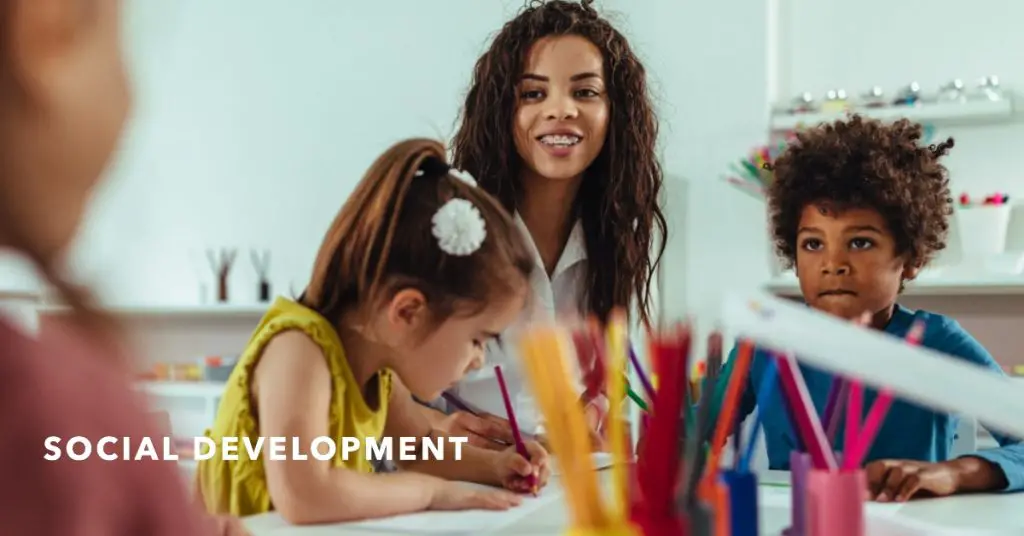
Art promotes social interaction among children
Art is not just an individualistic activity but also a highly social one. Children can work and interact with their peers collaboratively when they engage in artistic activities.
This type of social interaction is vital for children’s development and can lead to strong bonds and friendships that will last a lifetime.
Collaborative art projects require children to collaborate, share ideas, and compromise. These skills are essential for success in any group setting, whether in school, work, or personal relationships.
Through art, children learn how to communicate effectively with others and develop their interpersonal skills. It’s also important to note that art provides a safe space for social interaction.
Children who feel shy or anxious in other situations can feel comfortable expressing themselves through art.
This creates an environment where everyone feels included and valued regardless of their skill level or background.
Children learn to work collaboratively on group projects
Group projects are a crucial part of any child’s education.
They teach children how to work together as a team and help build important life skills such as leadership, problem-solving, decision-making, and communication skills.
Art projects provide the perfect opportunity for group collaboration because they allow each child to bring their unique skill set and perspective to the project.
For example, one child may excel at drawing while another may excel at color coordination or design concepts.
When working on collaborative art projects, educators and caregivers need to set clear expectations from the start.
This includes outlining each child’s role and responsibilities within the project and establishing guidelines for communication and decision-making.
Collaborative art projects offer many benefits beyond just developing creativity skills; they help build social connections among students while teaching them valuable life skills that will serve them well in the future.
It’s time we start recognizing the value of art in promoting social development and making it a priority in our education system.
5. Cultural Awareness
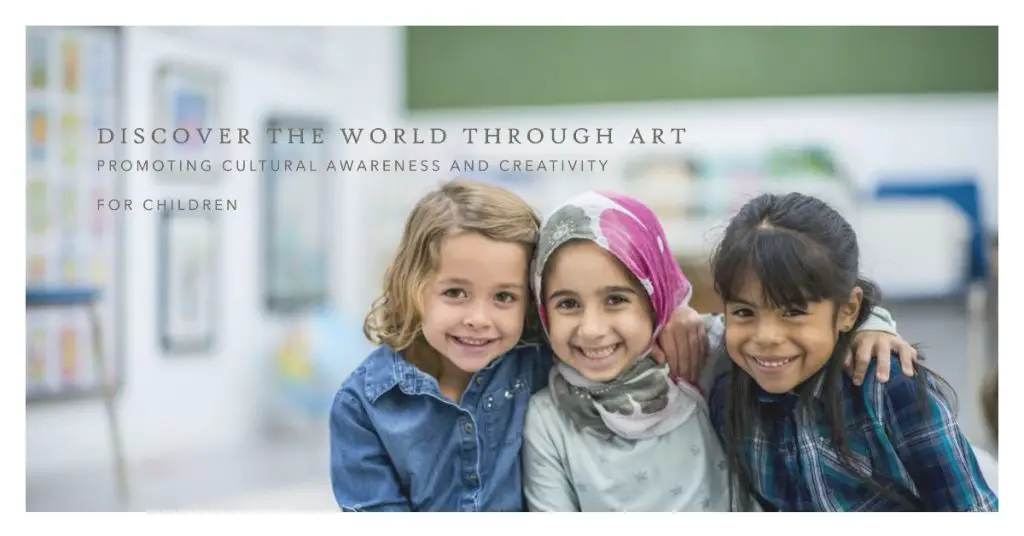
Art exposes children to different cultures, traditions, and perspectives
Art is an excellent way to expose children to the world and its rich cultural diversity. Children can learn about different cultures’ customs, traditions, and beliefs through art.
Whether through paintings, sculptures, or music, art provides a window into the fascinating and educational world.
For example, a child who studies traditional African dance or masks will learn about the culture’s history and understand its people’s values and beliefs.
Similarly, a child exposed to Chinese calligraphy or Indian Rangoli patterns can appreciate the beauty of these art forms while learning about their cultural significance.
Children develop an appreciation for diversity through exploring different forms of art
Exploring different art forms inspires curiosity in children about other cultures and creates empathy toward those who are different.
By learning about other people’s history and culture through their art, children develop an appreciation for diversity.
They realize that although we may look different on the outside or speak different languages; we all share similar human experiences.
Moreover, when exposed to diverse artworks at a young age; children will grow up with a sense of respect for others’ customs and traditions.
They would learn to embrace differences rather than fear them; creating a more tolerant society in the future.
The importance of incorporating cultural awareness into child development
Incorporating cultural awareness into child development is crucial today more than ever.
In our increasingly globalized world, where borders are being broken down every day; our future generations need to be aware of our differences and similarities to engage with others in meaningful ways.
By teaching our children about other cultures through their arts- they’ll grow up open-minded towards different cultures.
The world is becoming a global village; our children can thrive with the right tools and perspectives. Art is a powerful tool for cultural awareness in child development.
Exposing them to different art forms worldwide can instill empathy, curiosity, and respect for others’ traditions and beliefs.
Let’s ensure that our children are not only exposed to their own culture but also learn about others- so that they may be citizens of the world who appreciate diversity and embrace difference.
Final Thoughts on Why is Art Important for Child Development
In conclusion, art plays a crucial role in the development of children. It helps them enhance their cognitive skills, creativity, and imagination.
Art also promotes emotional development by allowing children to express themselves and understand their emotions better.
Moreover, art education improves children’s social skills as they learn to work with others and respect different perspectives.
Lastly, exposure to art can inspire children to appreciate diverse cultures and customs. Therefore, parents and educators must incorporate art into a child’s daily routine to foster well-rounded individuals who will contribute to society.
Let’s encourage our future generations to embrace art and its many benefits!
References:
- Mauro, Terri. “Fine and Gross Motor Skills in Children.” Verywell Family, 30 Sept. 2022, www.verywellfamily.com/what-are-motor-skills-3107058.
- “Creative Arts for Young Children | Illinois Early Learning Project.” Illinois Early Learning Project, 23 June 2023, illinoisearlylearning.org/toolkits/music-drama.
- Dickinson, Kevin. “Hone Your Problem-solving Skills Down to a Fine Art — With Fine Art.” Big Think, 15 Nov. 2022, bigthink.com/the-learning-curve/hone-your-problem-solving-skills-with-art.
- “Why The Arts Matter for Kids’ Self-Esteem.” Greater Good, greatergood.berkeley.edu/article/item/why_the_arts_matter_for_kids_self_esteem.
- “Why Is Art Important to Society – Eden Gallery.” Eden Gallery, www.eden-gallery.com/news/why-is-art-important.
- “The Art of Creating: Why Art Is Important for Early Childhood Development.” MSU Extension, 22 Jan. 2015, www.canr.msu.edu/news/the_art_of_creating_why_art_is_important_for_early_childhood_development.
- NDFAuthors. “The Benefits of Art and Creativity in Early Childhood Education – Novak Djokovic Foundation.” Novak Djokovic Foundation, 5 Apr. 2023, novakdjokovicfoundation.org/the-benefits-of-art-and-creativity-in-early-childhood-education.
- Kids, Pbs. “Why Is Art Important in Schools | Parenting Tips and Advice.” PBS KIDS for Parents, 11 Nov. 2020, www.pbs.org/parents/thrive/the-importance-of-art-in-child-development.
- Team, Maa. How Is Art Linked to Cognitive Development? 14 Jan. 2023, www.madridacademyofart.com/blog/how-is-art-linked-to-cognitive-development.
- Bosse, Kaylee. “Emotional Intelligence Growth Using Art, Play, and Nature.” Believe in Me, 2 Nov. 2021, believeinme.news/emotional-intelligence-growth-using-art-play-and-nature.
- Budzelek, Amy Bilden. 6 Life Skills Kids Can Learn at Art Class. www.whitbyschool.org/passionforlearning/8-life-skills-kids-can-learn-at-art-class.
- Art And Empathy: Four Thought Leaders Explain the Connection –– Minneapolis Institute of Art. 7 May 2021, new.artsmia.org/stories/art-and-empathy-four-thought-leaders-explain-the-connection.
- Cultivating Creativity and Innovation: Experiences and Activities | Virtual Lab School. www.virtuallabschool.org/fcc/creative-expression/lesson-2.
- Staake, Jill. “43 Collaborative Art Projects That Bring Out Everyone’S Creative Side.” We Are Teachers, 15 May 2023, www.weareteachers.com/collaborative-art.
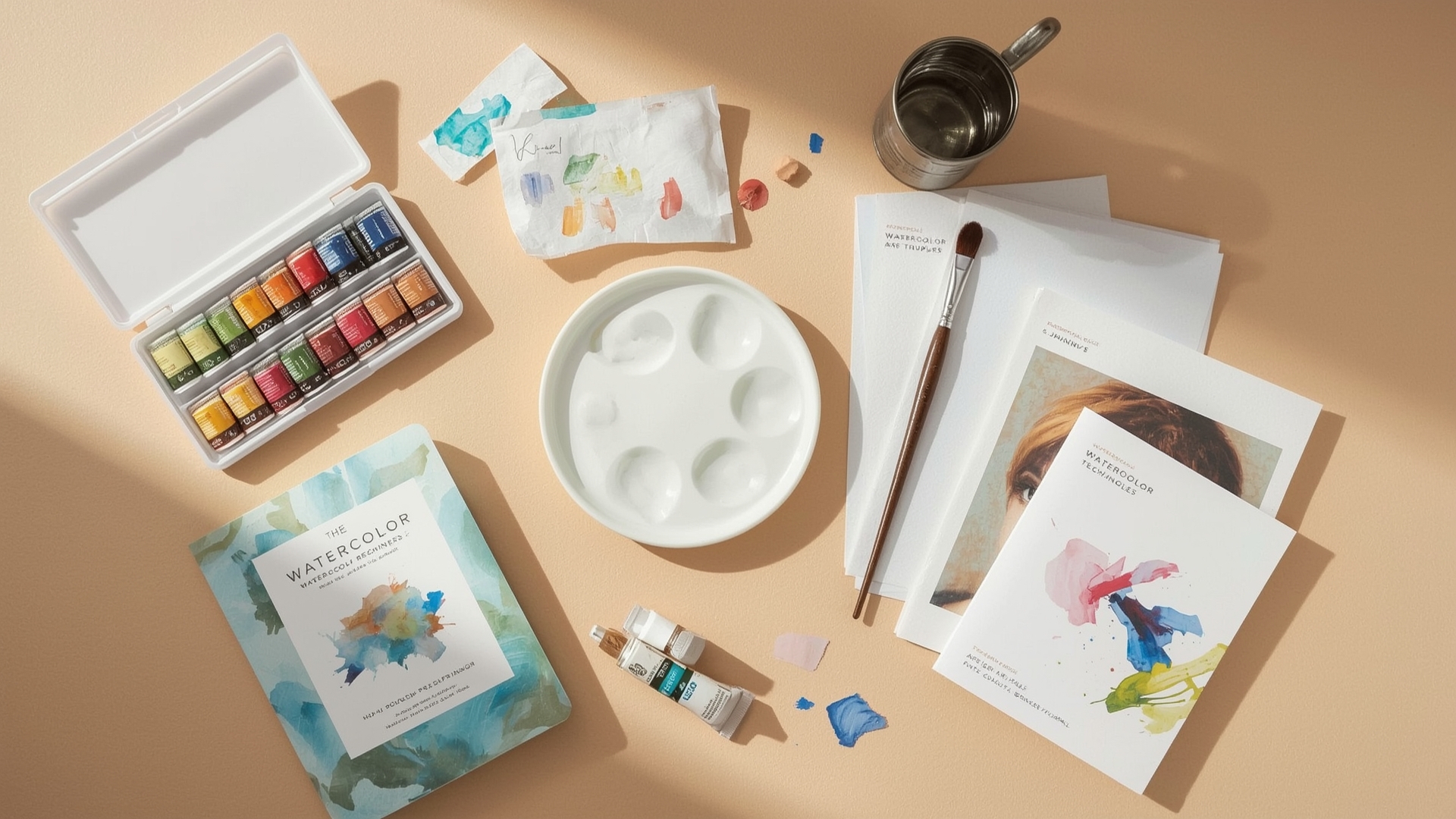
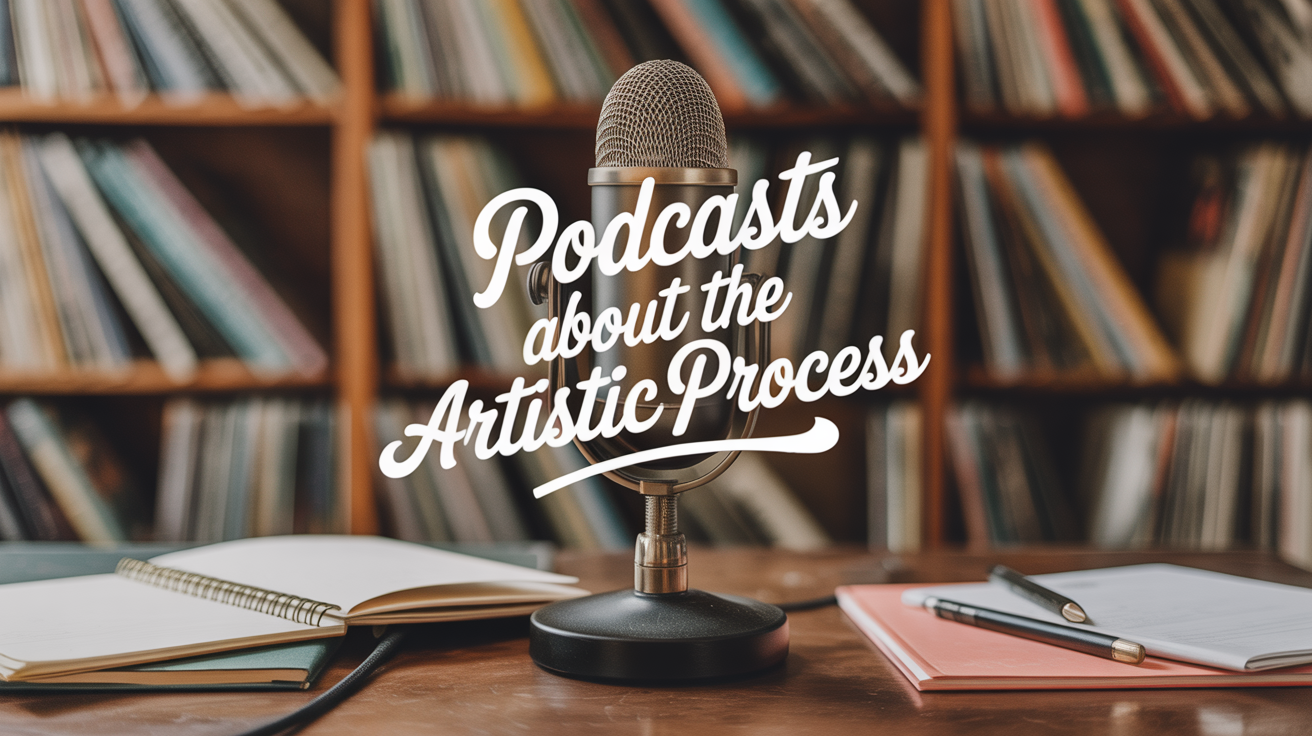
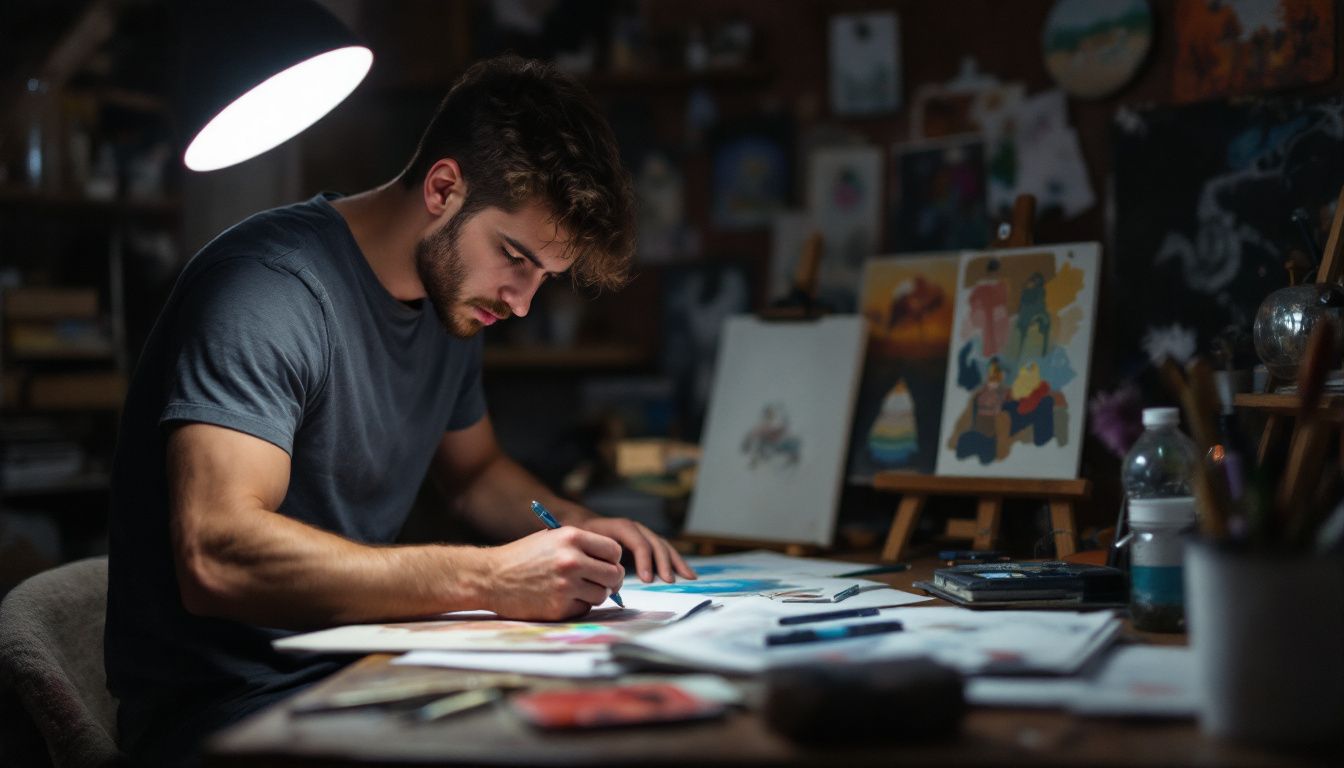
Leave a Reply